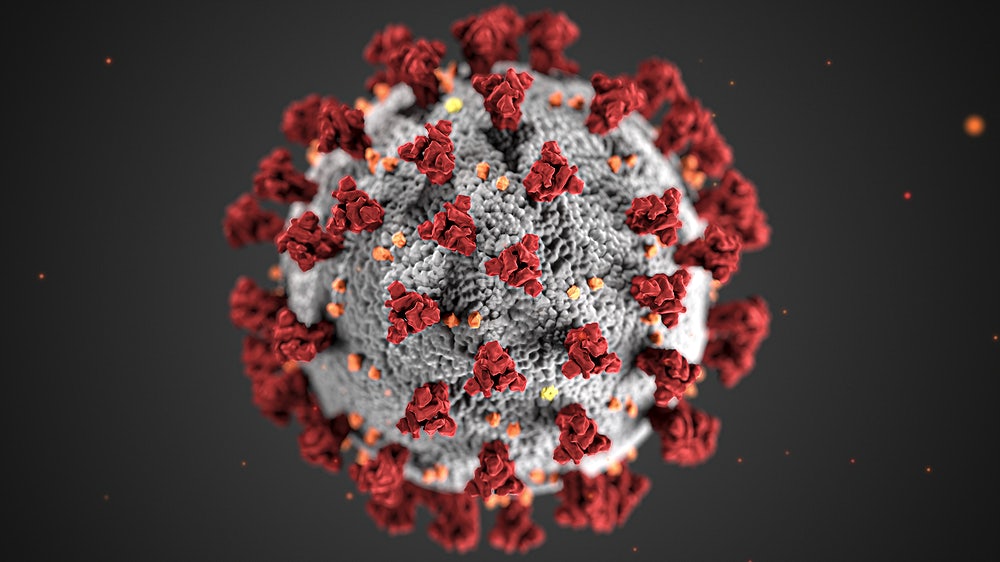
Visible blue light shown to inactivate SARS-CoV-2 and Influenza A viruses
Share
A breakthrough: Rapid inactivation of SARS-CoV-2 and Influenza A viruses with safe visible blue light, readily usable in public spaces without risks
There is accumulating scientific evidence regarding the ability of natural visible blue light to inactivate viruses. Several new studies show that especially lipid-enveloped viruses, such as Coronaviruses (including SARS-CoV-2, cause of COVID-19 pandemic) and Influenza-A virus (a common cause of regular flu and sickness absence), are susceptible to visible blue light. In fact, according to the studies, visible blue light inactivates the viruses already in minutes.
Researchers have achieved log reductions of nearly 3 (<99,9%) with actual SARS-CoV-2 virus in 1-8 hours, using different blue light dosages and different virus preparation methods.[2,3] In more thorough experiments with a coronavirus surrogate (FIPV, commonly used as SARS-CoV-2 surrogate), blue light could be shown to inactivate viruses in both wet and dried forms on different surfaces, such as metal, plastic and paper, reaching log reductions between >2 and >4 (from more than 99% to more than 99,99%) in 30-90 minutes.[1] In most scenarios blue light achieved better results than Far-UVC (222nm) lamps with similar power consumption. Also the presence of organic matter did not reduce the effect of blue light, unlike with UVC-light.[1] In all tests, untreated virus control samples remained stable, showing negligible reduction in the same time.[1,2,3]

Figure 1: Log reductions achieved with a surrogate coronavirus FIPV (similar to SARS-CoV-2) in suspension; a comparison between blue light and Far-UVC [1]
With influenza-A virus, a reduction of nearly 99% was achieved in 8 hours while untreated control sample showed negligible reduction. There is not yet conclusive information of inactivation of non-encapsulated viruses (norovirus, poliovirus, hepatitis among others), but larger blue light dosages might be needed to effectively inactive such micro-organisms.[2]
The new findings are remarkable, since visible blue light is safe for humans and materials and can be used in public spaces without risks to the occupants, based upon the exposure guidelines in IEC 62471[4] prepared by the International Commission on Illumination. Blue light affects microbes on surfaces and in the air – possibly affecting viruses inside aerosol droplets as well. Visible blue light can thus readily be used to replace common hazardous UVC solutions in indoor spaces in fighting COVID-19. This has the potential to solve the many health, safety and environmental issues arising from the use of chemicals and UVC-light as disinfectants.
The observed virus inactivation in the studies was dosage and time dependent, i.e. results will vary according to the output power of the light source and the distance between the light source and the surface. However, one of the biggest advantages of using blue light is that the disinfection cycle can be safely repeated many times during the day, minimizing the risk of viruses and other pathogens spreading from one person to the next.
Further information:
Kirsi Saukkonen, Senior Specialist, Infectious Diseases.
LED Tailor Oy
kirsi.saukkonen@ledtailor.fi
References:
|
1 |
Gardner A, Ghosh S, Dunowska M, Brightwell G. Virucidal Efficacy of Blue LED and Far-UVC Light Disinfection against Feline Infectious Peritonitis Virus as a Model for SARS-CoV-2. Viruses. 2021; 13(8):1436; doi: https://doi.org/10.3390/v13081436 (New Zealand)
|
|
2 |
Raveen Rathnasinghe, Sonia Jangra, Lisa Miorin, Michael Schotsasert, Clifford Yahnke, Adolfo Garcίa-Sastre Lighting a better future: the virucidal effects of 405 nm visible light on SARS-CoV-2 and influenza A virus bioRxiv 2021.03.14.435337; doi: https://doi.org/10.1101/2021.03.14.435337 (USA)
|
|
3 |
R. De Santis, V. Luca, G. Faggioni, S. Fillo, P. Stefanelli, G. Rezza, F. Lista Rapid inactivation of SARS-CoV-2 with LED irradiation of visible spectrum wavelenghts medRxiv 2020.06.18.20134577; doi: https://doi.org/10.1101/2020.06.18.20134577 (Italy)
|
|
4 |
IEC 62471: Photobiological safety of lamps and lamp systems. (2006).
|
